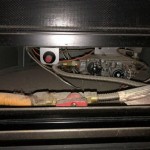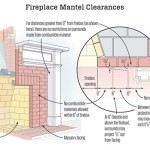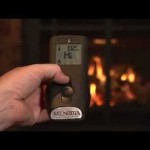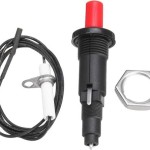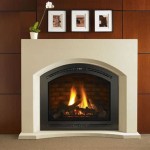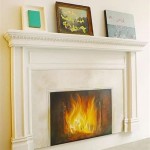Installing a Wood Burning Fireplace Box: A Detailed Guide
A wood-burning fireplace box offers a cozy and efficient way to enjoy the warmth and ambiance of a fireplace. It's an excellent choice for homeowners who want to add a fireplace to their existing space or upgrade an older, inefficient fireplace. Installing a wood-burning fireplace box requires careful planning and execution, but with the right tools and knowledge, it's a project that many DIY enthusiasts can tackle successfully.
Before embarking on the installation, it's crucial to understand the components of a wood-burning fireplace box and the process involved. This article will provide a step-by-step guide to help you achieve a safe and efficient installation.
Understanding the Components of a Wood-Burning Fireplace Box
A wood-burning fireplace box typically consists of the following components:
- Firebox: The primary structure that houses the fire, usually made of steel or cast iron for durability and heat resistance.
- Fireplace Door: A glass or metal door that allows viewing the fire while maintaining safety and efficiency.
- Damper: A control device that regulates airflow to the firebox, allowing you to adjust the intensity of the flames.
- Ash Pan: A removable tray at the bottom of the firebox to collect ash for easy disposal.
- Smoke Chamber: A space above the firebox that directs smoke towards the chimney.
- Grate: A metal grid that supports the burning wood and allows air to flow for combustion.
Step-by-Step Installation Guide
The installation process for a wood-burning fireplace box varies slightly depending on the specific model and your existing fireplace setup. However, the general steps are as follows:
1. Preparation
Before you begin, gather the necessary tools and materials, including:
- Level
- Measuring tape
- Safety glasses
- Work gloves
- Drill
- Screwdriver
- Screws or bolts
- Heat-resistant sealant
- Fireplace box
- Chimney liner (if required)
Ensure you have adequate ventilation, especially if working in an enclosed space. Make sure you have a clear path for the exhaust and that the chimney is properly sized for the fireplace box. You may need to have a professional chimney sweep inspect and clean your chimney before installation.
2. Removal of Existing Fireplace
If you are replacing an existing fireplace, remove it carefully. This may involve taking apart the existing structure, including the mantel and surround.
3. Installation of the Fireplace Box
Position the fireplace box in the existing fireplace opening, ensuring it is centered and level. Use shims or blocks to adjust the level if necessary. Secure the fireplace box to the existing fireplace opening with screws or bolts. Make sure the securement method is compatible with the firebox material and your fireplace structure.
4. Chimney Connection
Connect the fireplace box to the chimney. If the existing chimney is not suitable, you may need to install a chimney liner to ensure proper ventilation and safe exhaust. This step often requires the assistance of a professional.
5. Installation of the Door and Damper
Install the fireplace door and damper according to the manufacturer's instructions. Ensure they are securely attached and that the door seals properly to prevent leaks. Check the operation of the damper to ensure smooth opening and closing.
6. Final Touches
Apply heat-resistant sealant around the fireplace box to prevent leaks and ensure a safe and efficient installation. Clean up any excess materials and debris.
Key Considerations for a Successful Installation
Consider these points for a successful installation:
Fireplace Box Size and Chimney Size
Ensure that the fireplace box and chimney are compatible in size. A smaller fireplace box with an oversized chimney can lead to inefficient heating and smoke problems. Similarly, an oversized fireplace box with an undersized chimney can create a dangerous buildup of exhaust gases.
Ventilation and Safety
Adequate ventilation is critical for proper combustion and safety. Ensure your home is properly ventilated and that the exhaust system is operating efficiently.
Fireplace Inspection
After installation, have a qualified professional inspect the fireplace box and chimney system to ensure everything is operating safely and efficiently.
Installing a wood-burning fireplace box can add warmth, ambiance, and value to your home. By following these steps and considering important safety and efficiency factors, you can ensure a successful installation that you'll enjoy for years to come.

How To Install A Wood Burning Fireplace Insert This Old House

Wood Fireplace Insert Installation Overview By Rockford Chimney Supply

Diy Fireplace Installation Framing And Final Connections

How To Install A Fireplace Homeserve Usa

Fireplace Insert Installation Step By Forbes Home

How To Install A Fireplace Insert Ask This Old House

How To Install An Electric Fireplace Insert Fireplaces Direct Learning Center

What S Best A Fireplace Stove Or Insert We Love Fire

Time To Replace Wood Burning Prefab Fireplace Greenville Sc Blue Sky

Diy How To Install A Wood Burning Stove Rockford Chimney
Related Posts


